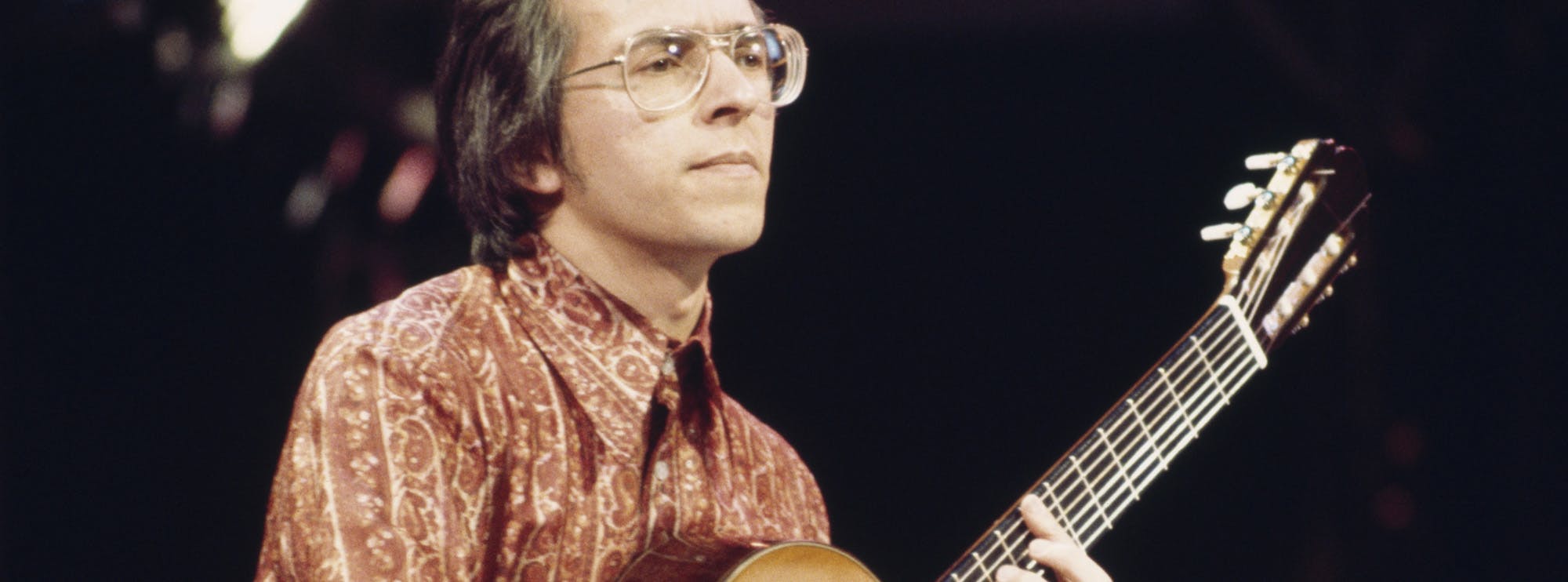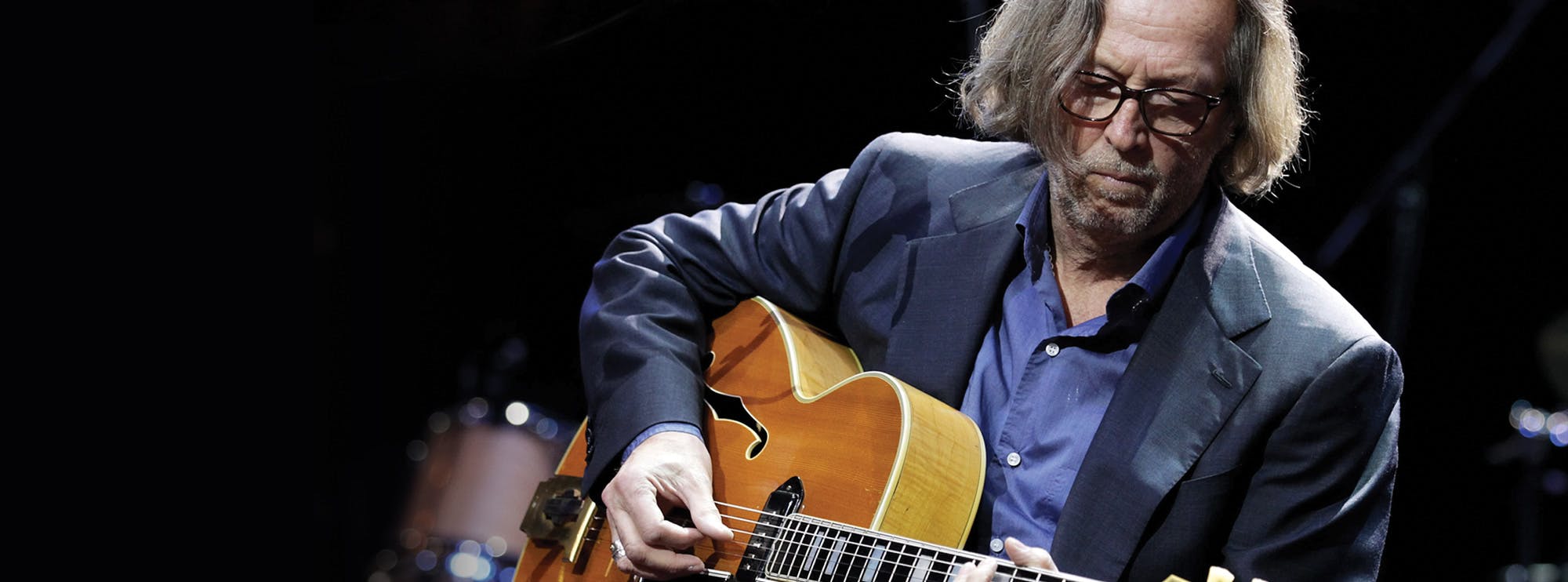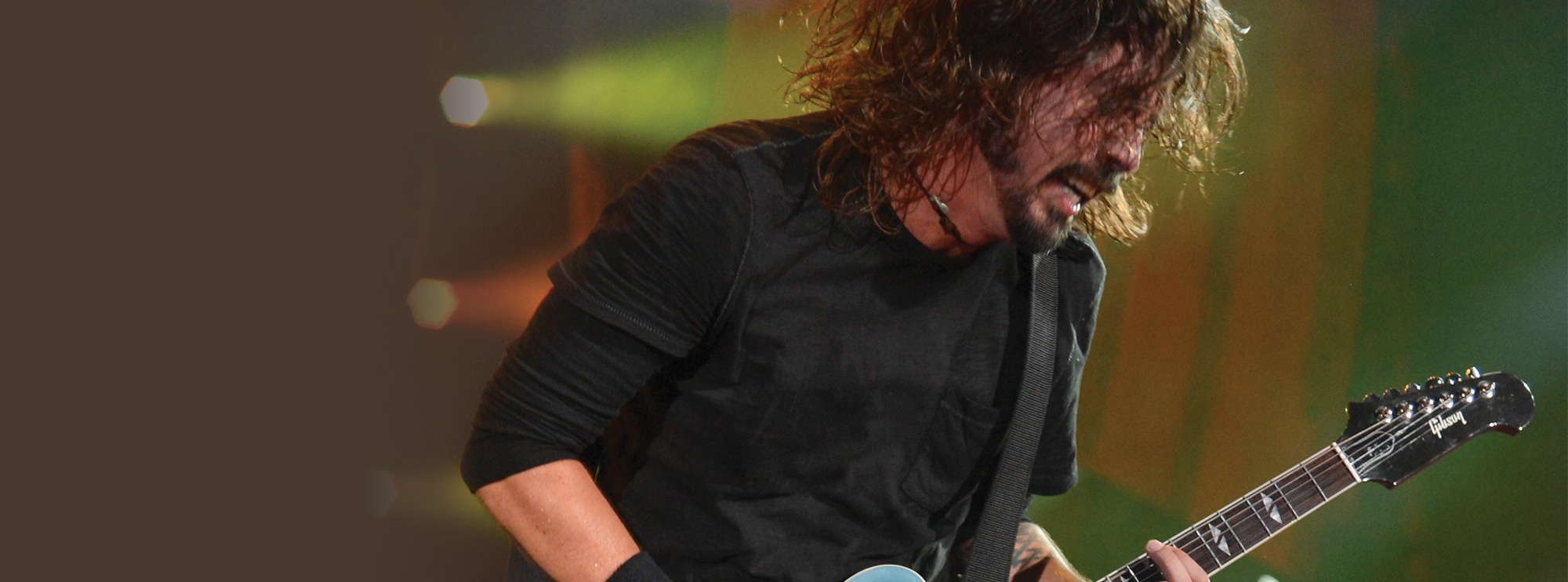With a unique and instantly recognisable voice, Brian May’s guitar style offers a world of guitar phrasing ideas and soloing approaches. Jamie Humphries, who has spent years working with both Brian May himself and on many Queen related shows and tours, offers an exclusive Brian May style guitar lesson and original guitar track inspired by some of Brian’s most memorable pieces, guitar techniques and style. If you've ever wondered how it is done - here's your chance to find out! Brian May’s guitar playing is as individual and unique as his approach to his equipment. He fuses powerful rhythm playing with emotive melodic lead lines. Brian’s voice on the instrument is multifaceted, complex yet utterly beautiful.
Brian’s rhythm guitar playing style blends gently “chiming” clean chords, often performing them as chord arpeggios, brushing the serrated edge of the sixpence he uses instead of a conventional guitar pick, across the strings producing a very distinct tone, especially on ballads. His Rock rhythm playing makes use of power chords and slash chords. A slash chord is when another note other than a chords root not appears in the root position. For example, Brian will often perform a two-string power chord, its root note either on the 5th or 6th string, By simply dropping the root note by a semi tone he achieves a 1st inversion of a major chord either a 5th higher or a 4th lower.
Brian May’s guitar playing is as individual and unique as his approach to his equipment. He fuses powerful rhythm playing with emotive melodic lead lines. Brian’s voice on the instrument is multifaceted, complex yet utterly beautiful.
Jamie Humphries
His lead guitar playing is powerful, dynamic and majestic, playing guitar solos that are often extensions of the vocal melody. He makes use of such phrasing tools as pre-bends and a very subtle vocal style vibrato. Brian often layers several lines to form rich harmonies, or musical “canons”, which he replicates live with either a harmoniser or multiple delays, enabling him to play off of each line. He also outlines more complex chord sequences with very regal sounding arpeggios, demonstrating his appreciation and deep knowledge of a variety of musical style and influences. And let's not forget his remarkable ability for arranging guitar parts, forming a pseudo orchestra or brass band. He will arrange counterpoint melodies, and with the use of his unique tone tools, the Red Special, Vox AC30, treble booster, Deacy amp and the humble wah pedal, sculpt a broad pallet of tones, enabling each line to sit perfectly in its own space with in the mix.
Brian’s guitar technique is also very light. He often simply brushes across the strings with his index finger of his picking hand to achieve a very gently sounding rhythm style. He also uses a unique technique that almost resembles tapping; where by his index finger of his picking hand almost appears to hammer on the string, before laying back to rest to mute. Listen to the final lines in “Bohemian Rhapsody” or the descending verse line in “Killer Queen” for an example of this technique.
As well as his gentle dynamic melodious style, Brian is no slouch when it comes to technique. He employs such techniques as two handed tapping, fast alternate picking through both major scale lines and chromatic scales and performs fast left hand hammer-on/pull-off pentatonic phrases. Check out the solos on “A Kind of Magic”, “Invisible Man”, “One Vision”, and “Princes of the Universe”. For Brian May guitar style lesson track I have drawn inspiration from several Queen tracks to demonstrate various rhythm and signature Brian May lead guitar techniques. These include “Hammer to Fall”, “One Vision”, “Now I’m Here”, “Keep Yourself Alive”, “Killer Queen”, “Bohemian Rhapsody”, and “Friends Will Be Friends”. I’ve tried to demonstrate various rock guitar techniques that Brian uses within a music setting. But remember, I’m only scratching the surface, and I would suggest studying his huge catalogue of recordings. Trust me; I feel like such a better player since I had to really get inside Brian’s guitar playing style for the various Queen associated projects I’ve been involved with!
Bars 1-5:
Kick off with the first half of our verse riff. A pretty straight ahead Rock riff here based around a few of Brian’s favourite power chord and slash chord voicings. Pay attention to the G notes on the 3rd fret 6th string, that are raised a quarter tone bend by simply pulling them down slightly.
Bars 6-9:
Introduce the second half of our verse riff, with the first two bars based around the first two bars of the opening of our riff. The second two bars feature a different set of power chords, included for some harmonic variation.
Bars 10-17:
Repeat the above sections, concluding our verse progression, which now leads to a bridge progression.
Bars 18-21:
Feature a short bridge section, as well as introducing a new key signature, that uses an eighth/sixteenth note “galloping” rhythm. I recorded this track using a sixpence piece, and you really appreciate the tone achieved by the coin brushing the strings. Pay attention also to the palm muting, as this is vital to the dynamics of this section.
Bars 22-25:
Introduce our chorus progression, as well as a new key signature. This section has a lot going on including power chords, slash chords, and Hybrid pentatonic scale riff ideas. Pay attention to the rests between the chords, to keep the riff sounding tight.
Bars 26-29:
Repeat our previous section, although you should pay attention to the “pushed” chord that ties over to the first beat of bar 26.
Bars 30-33:
Feature the start of our pre solo section, and introduces a trip feel to the rhythm. This section features multiple layered harmony guitar parts, producing a lush harmonic wall of sound! For this section I experimented with the various pickup selections, and phase switching on my Guild BHM1 replica, as well as using the wah pedal as a tone control.
Bars 34-35:
Conclude this section with a cross rhythm descending figure that is performed in harmony. We conclude with a harmony trill performed on the 3rd string.
Bars 36-39:
Feature the open line to our main solo, and make use of various string bending figures, and staccato cross rhythm licks. This section is based predominantly around the G major scale and its diatonic modes, with the exception of bar 39, where the F natural note is used over the G7 chord, implying G Mixolydian; a very typical harmonic vehicle in a Queen ballad progression.
Bars 40-43:
Include some very musical lines used by Brian to outline chord and harmonic movement. Using a mixture of string bends and slides, you can really hear how he constructs melodic variation to outline the various chord changes. Once again this section includes some very “majestic” sounding phrasing, with more staccato cross rhythms and trills.
Bars 44-47:
Introduce a new familiar sounding finger as we enter the second half of our solo section. Once again I’ve made use of BM style phrasing, including string bending and cross-rhythmic lines.
Bars 48-51:
Include some of Brian’s signature scale runs, kicking off with an ascending figure that includes some tricky bending ideas to conclude. This section concludes with a triplet descending sequences, that shifts through various positions.
Bars 52-53:
Include an example of how Brian forms runs using the major pentatonic with a lick based around D major pentatonic.
Bars 54-56:
Conclude our study piece with a D minor pentatonic phrase, creating a bluesy feel that ascends, concluding to the major 3rd of our resolving G major chord.
The Gear
For the Video and backing track session I used an RS Custom Guitars Model 84, BM Guild replica fitted with original 1984 BHM Signature DiMarzio pickups. This was plugged into a KAT strap treble booster, and then into a TAE Tube Amp Emulator pedal, direct to the recorder. On the backing track I used an MXR EVH phaser and a Dunlop EVH wah, for some tonal variation on the backing guitar parts. I also recorded this track with an old sixpence piece from the late 1950’s/early 1960’s. For the rhythm parts the guitar volume was set about half way, producing a mild crunch with plenty of bite. For the lead sections, I turned the guitar volume up full, and also experimented with various pickup selections, and phase settings, giving each harmony voice its own space. I also used the wah as a tone control on one of the harmony lines. For the clean rhythm part, I back the guitar volume right down, and gently brushed the sixpence across the strings, creating a bright chiming rasp.
About The Tutor
Tutor Profile
Jamie Humphries
Jamie is one of the mainstays of LickLibrary, having a stream of hugely successful best selling DVDs, Jamie is best known as Brian May's sideman who he's played shows with all over the world. Aside from this Jamie is a hugely popular clinician working all over the world with Ernie...



